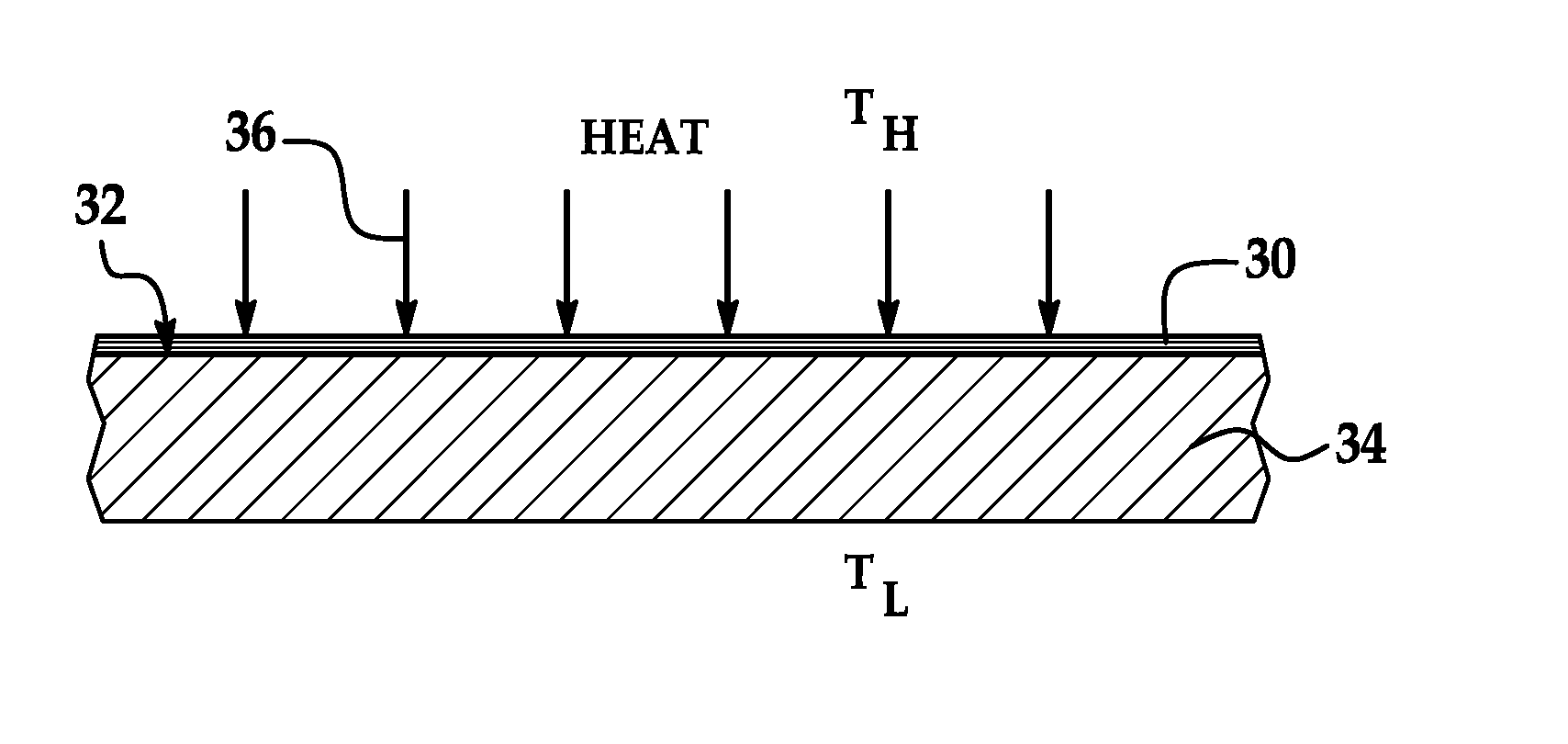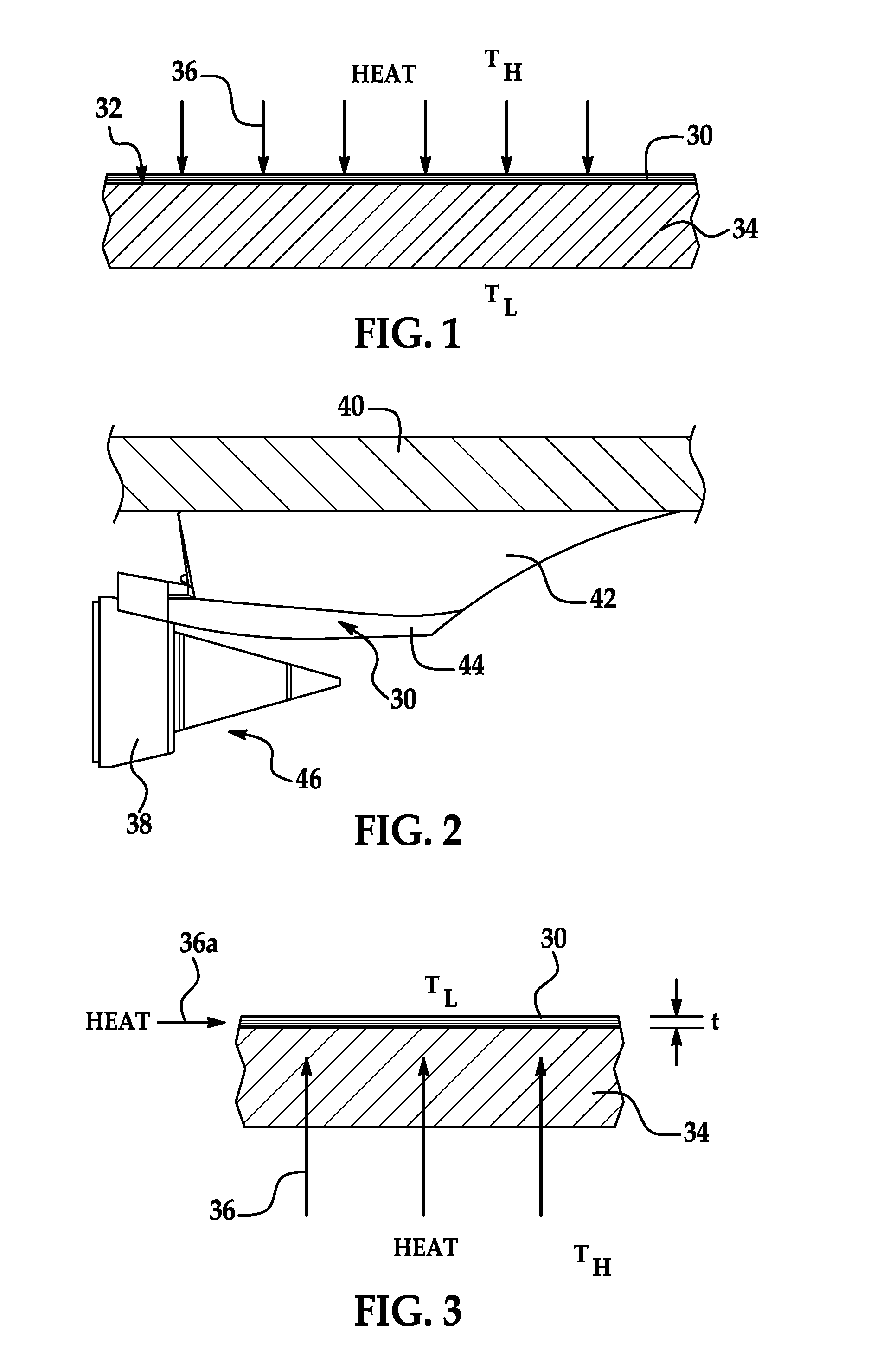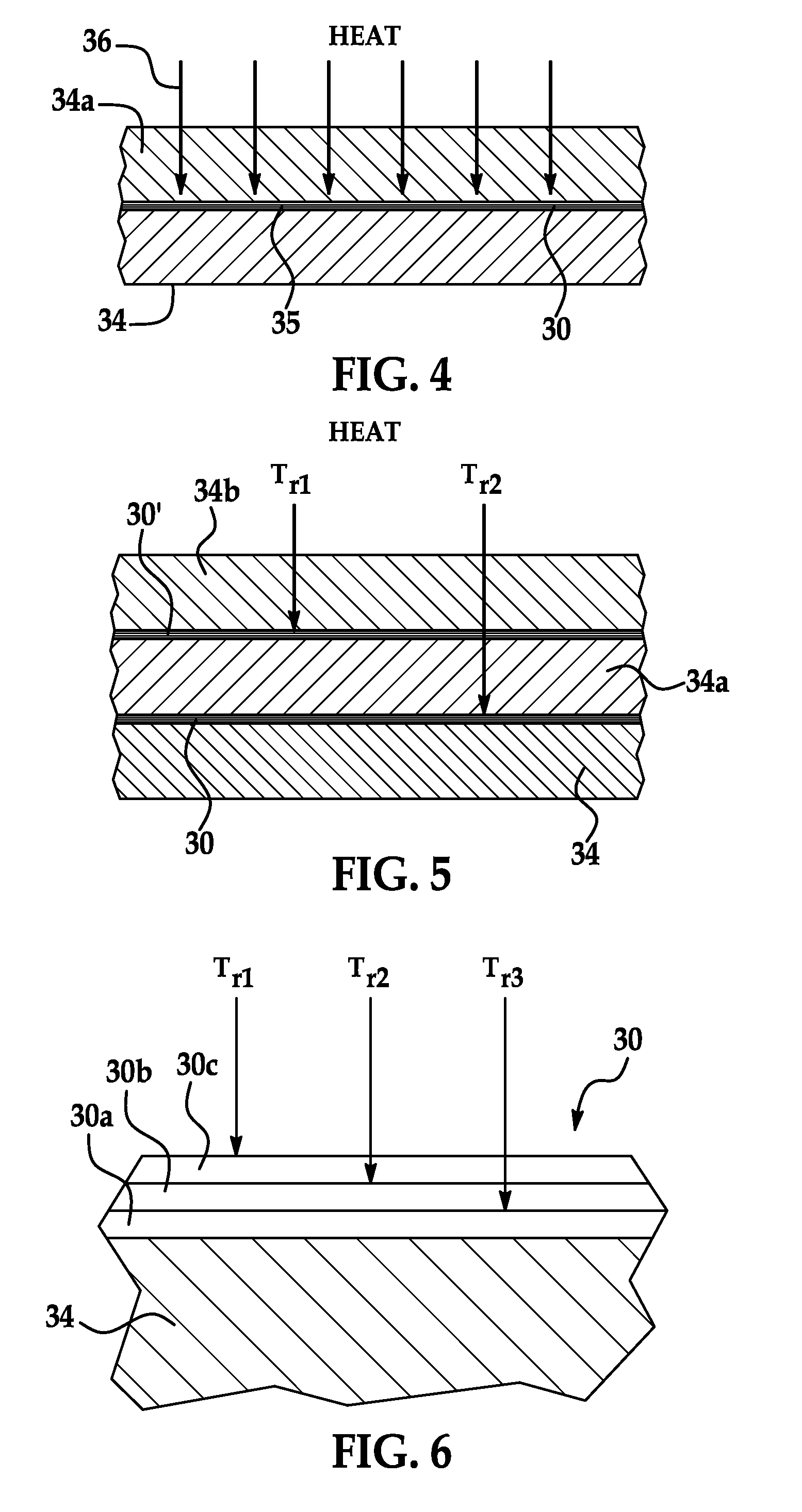Nano-coating thermal barrier and method for making the same
- Summary
- Abstract
- Description
- Claims
- Application Information
AI Technical Summary
Benefits of technology
Problems solved by technology
Method used
Image
Examples
Embodiment Construction
[0029]Referring to FIG. 1, the disclosed embodiments relate to a thermal barrier coating 30 that may be applied to a substrate 34 in order to control the transport of heat 36, also referred to herein as thermal energy, from an area of a higher temperature TH to an area of a lower temperature TL. In the example shown in FIG. 1, the thermal barrier coating 30 is designed to reduce the amount of heat 36 that reaches the substrate 34. As will be discussed below in more detail, the thermal barrier coating 30 may be a relatively thin, durable layer or layers of materials that reduce the transport of thermal energy 36 in the form of thermal quanta known as phonons by interfering with the phonon flow through the coating 30, thus forming a barrier that substantially reduces the thermal energy 36 transferred to the substrate 34. Phonons are quasi-particles characterized by quantization of the modes of lattice vibrations of periodic, elastic crystal structures of solids. Phonons may be viewed ...
PUM
| Property | Measurement | Unit |
|---|---|---|
| Temperature | aaaaa | aaaaa |
| Flow rate | aaaaa | aaaaa |
| Mass | aaaaa | aaaaa |
Abstract
Description
Claims
Application Information
 Login to View More
Login to View More - R&D
- Intellectual Property
- Life Sciences
- Materials
- Tech Scout
- Unparalleled Data Quality
- Higher Quality Content
- 60% Fewer Hallucinations
Browse by: Latest US Patents, China's latest patents, Technical Efficacy Thesaurus, Application Domain, Technology Topic, Popular Technical Reports.
© 2025 PatSnap. All rights reserved.Legal|Privacy policy|Modern Slavery Act Transparency Statement|Sitemap|About US| Contact US: help@patsnap.com



